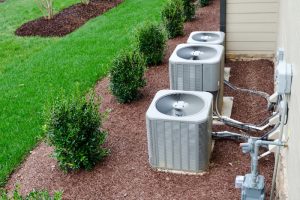 The heat pump is common in some parts of the US, almost unknown in others. You don’t often find heat pumps at work in places with cold winters, but they’re increasingly popular in warmer climates like those on the West Coast, the Southwest, and right here in Florida.
The heat pump is common in some parts of the US, almost unknown in others. You don’t often find heat pumps at work in places with cold winters, but they’re increasingly popular in warmer climates like those on the West Coast, the Southwest, and right here in Florida.
But even with the popularity of heat pumps in Lake Butler, FL and elsewhere in North Central Florida, many homeowners are not sure how they do what they do. I.e. “How does something that looks like an air conditioner and acts like an air conditioner also provide heating when needed?”
Heat Pump Operation
The simple answer is that a heat pump is an air conditioner that can switch the direction it works. Where a standard AC cools the indoors by moving heat outdoors, a heat pump can also move heat indoors (which means it’s cooling the outdoors, although not that anybody would notice unless standing right next to the outside cabinet). For a heat pump to change between heating and cooling modes, it must switch the flow of refrigerant. The following are the parts necessary for the heat pump to do this:
- Reversing Valve: This is the essential component for a heat pump to allow it to both heat and cool. In a standard AC, hot refrigerant exits the compressor and goes directly to the outdoor coil where the heat is released. In a heat pump, the hot refrigerant exits the compressor and then enters the reversing valve. Depending on the position of the reversing valve, the refrigerant will either be sent first to the outdoor coil (cooling mode) or to the indoor coil (heating mode). The thermostat has a direct connection to the reversing valve to charge it so it changes position. A stuck reversing valve is the main reason a heat pump may become stuck in one mode or the other.
- Suction Line Accumulator: Even people who understand heat pump basics are often unaware that the system uses less refrigerant when it’s in heating mode. But where is the extra refrigerant supposed to go during this time? The suction line accumulator is where. This part also prevents excess refrigerant from moving backward into the compressor, which causes extensive damage leading to compressor burnout.
- Second Expansion Valve: In a standard AC, the refrigerant leaving the outdoor coil (where it has cooled down as it released heat) passes through an expansion valve that lowers its pressure. The drop in pressure makes the refrigerant even colder for when it goes through the indoor coil. Because a heat pump must send refrigerant both directions, it must have a second expansion valve to lower the pressure of the refrigerant headed to the outdoor coil during heating mode.
- Defrost Timer: This is almost never a concern with heat pumps in Florida, but it’s still a key difference between a heat pump and an AC. In heating mode, the outdoor coils will start to develop frost along them. A timer will regularly activate a defrost mode, which briefly sends hot refrigerant back through the coils to release heat and melt the ice.
If you need any help with your heat pump, we’re the local experts to trust.
